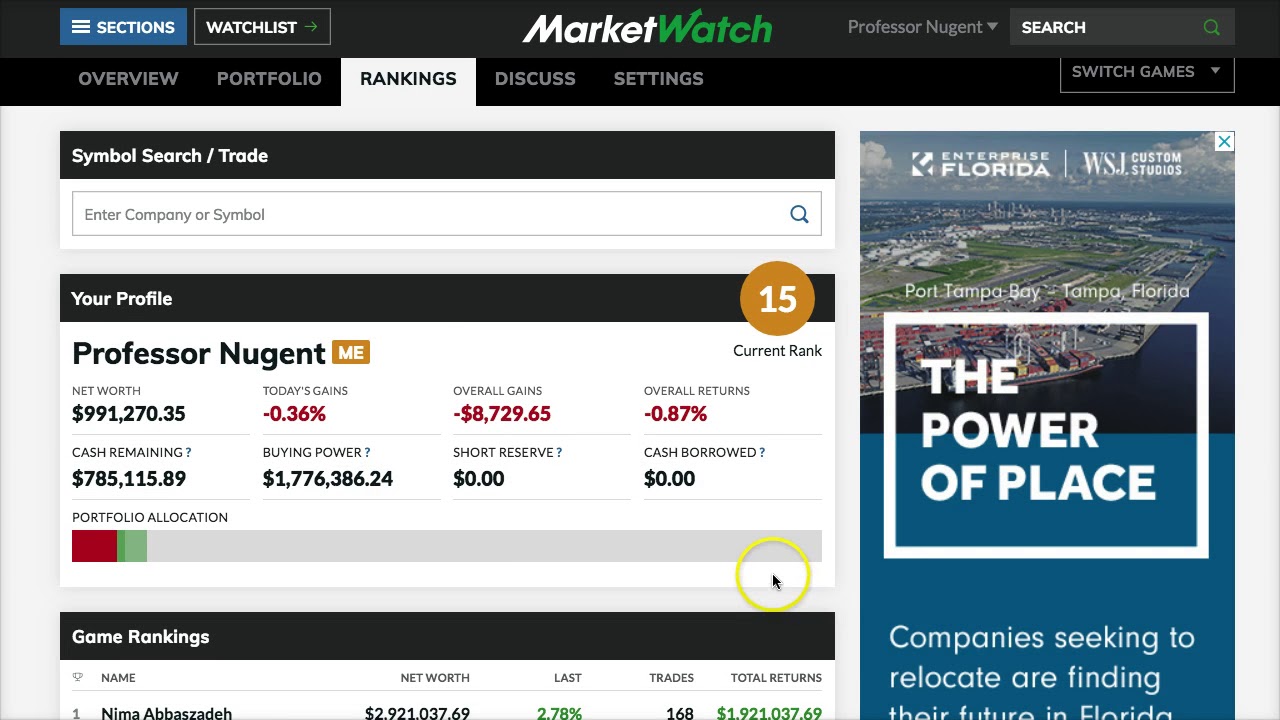

Finance
How To Sell A Credit Card
Published: November 4, 2023
Learn effective strategies to sell credit cards and increase your finance knowledge. Discover expert tips and tricks to boost your sales and maximize profits.
(Many of the links in this article redirect to a specific reviewed product. Your purchase of these products through affiliate links helps to generate commission for LiveWell, at no extra cost. Learn more)
Table of Contents
- Introduction
- Step 1: Understand the features and benefits of the credit card
- Step 2: Identify your target audience
- Step 3: Create a compelling sales pitch
- Step 4: Use effective marketing strategies
- Step 5: Highlight the rewards and incentives
- Step 6: Address common objections and concerns
- Step 7: Provide excellent customer service
- Step 8: Follow up and maintain relationships with customers
- Conclusion
Introduction
When it comes to selling credit cards, it’s not just about convincing people to sign up; it’s about understanding their needs and showing them the value of the card. Credit cards are powerful financial tools that can bring convenience, security, and rewards to consumers. As a salesperson, it’s vital to have a deep understanding of the features and benefits of the credit card you’re selling, as well as the needs and desires of your target audience.
In this guide, we will walk you through the process of selling a credit card effectively. From researching the card’s features to creating a compelling sales pitch, we’ll cover all the essential steps to help you succeed in selling credit cards.
Understanding the features and benefits of the credit card is essential because it allows you to effectively communicate its value to potential customers. Each credit card comes with a unique set of features, such as cashback rewards, travel perks, or low-interest rates. By being knowledgeable about these features, you can explain to potential customers how the card can enhance their financial lives.
Identifying your target audience is another crucial step in selling credit cards. Different credit cards cater to different demographics and lifestyles. For example, a travel rewards card may appeal to frequent flyers, while a cashback card may be more appealing to everyday spenders. By understanding your target audience, you can tailor your sales pitch to their specific needs and preferences.
Step 1: Understand the features and benefits of the credit card
Before you can effectively sell a credit card, it is crucial to have a deep understanding of its features and benefits. Each credit card offers unique perks and rewards that can be enticing to potential customers.
Start by thoroughly studying the credit card’s terms and conditions, as well as any marketing materials provided by the issuer. Take note of the card’s interest rates, annual fees, and rewards structure. Familiarize yourself with any introductory offers or promotional benefits that may be available.
Once you have a good grasp of the basic details, focus on the specific features and benefits that set the credit card apart from others in the market. These may include:
- Cashback rewards: Highlight the percentage of cashback that customers can earn on different types of transactions. Explain how these rewards can add up over time and provide tangible value to cardholders.
- Rewards program: If the credit card has a rewards program, explain how it works and emphasize the range of redemption options available. Highlight any exclusive partnerships or special bonuses that come with the rewards program.
- Travel perks: If the card offers travel benefits such as airline miles, airport lounge access, or travel insurance, emphasize how these perks can make the cardholder’s travel experiences more enjoyable and convenient.
- Low-interest rates: If the credit card has competitive interest rates, emphasize the potential savings customers can enjoy when compared to higher-interest cards. Explain how the card can be a cost-effective tool for managing personal finances.
- Security features: Discuss the security measures implemented by the issuer, such as fraud protection, zero-liability policies, and chip-enabled technology. Assure potential customers that their financial information will be safeguarded.
By understanding the features and benefits of the credit card, you can confidently explain how it can address the specific needs and desires of potential customers. Remember, the key is to highlight the value proposition and show customers how the card can improve their financial situation or enhance their lifestyle.
Step 2: Identify your target audience
Identifying your target audience is a crucial step when it comes to selling credit cards. Not all credit cards are suitable for everyone, and tailoring your sales pitch to meet the preferences and needs of your target audience can greatly increase your chances of success.
Here are some key factors to consider when identifying your target audience:
- Demographics: Consider the age, gender, income level, and occupation of your potential customers. Different demographics may have different financial goals and spending habits that can influence their interest in a particular credit card.
- Lifestyle: Take into account the lifestyle and interests of your target audience. Are they frequent travelers? Do they prioritize dining out and entertainment? Understanding their lifestyle can help you select the right credit card that aligns with their interests and needs.
- Financial goals: Identify the financial goals of your potential customers. Are they looking to save money, build credit, or earn rewards? Understanding their objectives will help you position the credit card as a solution that can help them achieve their financial goals.
- Existing customer base: If you work for a financial institution, analyze the characteristics of your existing credit card customers. Look for patterns in their demographics and spending habits to identify potential target audiences that may resonate with similar card offerings.
Once you have identified your target audience, you can tailor your sales pitch to address their specific needs and desires. For example, if your target audience consists of frequent travelers, you can emphasize the travel rewards, airline miles, and complimentary travel insurance offered by the credit card. If your target audience is focused on saving money, you can highlight the low-interest rates and cashback rewards.
Remember that your target audience may not be limited to individuals. Small businesses, college students, and other groups may also be potential customers for certain types of credit cards. Understanding the unique needs and pain points of these different groups will allow you to customize your sales approach and language to better resonate with them.
By identifying your target audience, you can focus your efforts on reaching the right customers and tailor your sales approach to meet their specific needs. Understanding their demographics, lifestyle, financial goals, and existing customer base will enable you to develop a targeted marketing strategy and increase your chances of success in selling credit cards.
Step 3: Create a compelling sales pitch
Creating a compelling sales pitch is crucial to effectively communicate the value of a credit card and convince potential customers to sign up. A well-crafted sales pitch not only highlights the unique features and benefits of the card but also establishes a connection with the customer by addressing their specific needs and desires.
Here are some tips to help you create a compelling sales pitch for a credit card:
- Start with a hook: Grab the customer’s attention right from the beginning by addressing a common pain point or desire. For example, you could start with a question like, “Do you want to earn free travel rewards every time you use your credit card?” This immediately captures the customer’s interest and sets the stage for the rest of your pitch.
- Highlight the key benefits: Focus on the most enticing benefits of the credit card that are relevant to the customer’s needs. Whether it’s cashback rewards, travel perks, or low-interest rates, clearly explain how these features can enhance the customer’s financial situation or lifestyle.
- Use storytelling: Use storytelling techniques to create a relatable and memorable pitch. Share success stories of other customers who have benefited from the credit card, showcasing how it has improved their lives. This helps the customer visualize themselves enjoying the same benefits.
- Address objections: Anticipate and address common objections or concerns that customers may have. This shows that you understand their hesitations and are ready to provide solutions. For example, if a customer is concerned about annual fees, explain how the card’s rewards and benefits outweigh the cost.
- Create a sense of urgency: Encourage customers to take immediate action by creating a sense of urgency. Highlight limited-time offers, exclusive promotions, or bonuses that are available for a limited period. This motivates customers to act quickly and not miss out on the opportunity.
- Personalize the pitch: Tailor your pitch to the specific needs and interests of the customer. Refer back to the information you gathered about their demographics, lifestyle, and financial goals. This shows that you have personalized the pitch and are offering a card that aligns with their unique circumstances.
Remember, a compelling sales pitch is not just about listing the features of the credit card. It’s about understanding the customer’s needs, addressing their concerns, and presenting a convincing case for why the card is the best choice for them. By crafting a pitch that resonates with the customer and speaks to their desires, you increase your chances of making a successful sale.
Step 4: Use effective marketing strategies
Implementing effective marketing strategies is essential to reach and engage your target audience and maximize your chances of selling credit cards. By leveraging various marketing channels and tactics, you can create awareness, generate leads, and nurture potential customers through the sales funnel.
Here are some effective marketing strategies to consider:
- Online Advertising: Utilize online advertising platforms such as Google Ads, social media ads, and display ads to promote the credit card. Target specific demographics and interests to reach your ideal audience.
- Content Marketing: Create informative and engaging content related to personal finance, credit card benefits, and financial tips. Publish this content on your website, blog, or social media platforms to establish your credibility and attract potential customers.
- Email Marketing: Build an email list of interested prospects and send regular newsletters or targeted email campaigns showcasing the benefits of the credit card. Provide valuable insights, tips, and exclusive offers to keep the customers engaged and interested.
- Social Media Marketing: Leverage social media platforms such as Facebook, Instagram, and LinkedIn to promote the credit card. Engage with your audience by posting relevant content, running contests or giveaways, and responding to comments and inquiries.
- Affiliate Marketing: Collaborate with influencers, bloggers, or financial websites to promote the credit card to their audience. Offer them incentives such as referral fees or exclusive offers for their followers to drive leads and sales.
- Partnerships and Co-Branding: Seek partnerships with other companies or organizations that align with the target audience of the credit card. This can include popular airlines, hotels, or retail stores. Collaborate on marketing campaigns and offer joint promotions to gain visibility and enhance credibility.
It’s important to track the performance of your marketing strategies to assess their effectiveness. Monitor metrics such as website traffic, conversion rates, email open rates, and social media engagement to identify which tactics are generating the best results. Continuously optimize your marketing efforts based on the data and feedback you receive.
Remember to comply with the relevant advertising regulations and ensure that all marketing materials accurately represent the credit card’s features, benefits, and terms and conditions.
By implementing a comprehensive marketing strategy, you can reach a wider audience, generate leads, and ultimately increase your chances of selling credit cards effectively.
Step 5: Highlight the rewards and incentives
One of the most effective ways to sell a credit card is by highlighting the rewards and incentives it offers. Rewards programs are often a significant deciding factor for customers when choosing a credit card, as they provide tangible benefits and can enhance the overall credit card experience.
Here are key points to consider when highlighting the rewards and incentives of a credit card:
- Cashback: If the credit card offers cashback rewards, emphasize the percentage of cashback that customers can earn on different types of transactions. Highlight how these rewards can add up over time, allowing users to earn money back on their everyday spending.
- Travel rewards: If the card has a travel rewards program, highlight how customers can earn points or miles for their spending, which can be redeemed for flights, hotel stays, or upgrades. Explain the flexibility and value of these rewards, appealing to the sense of adventure and wanderlust.
- Exclusive partnerships: If the credit card has partnerships with airlines, hotels, or other businesses, showcase the exclusive deals and discounts available to cardholders. This creates a sense of exclusivity and shows customers the additional benefits they can enjoy by choosing the card.
- Bonus offers: Promote any introductory bonus offers that come with the credit card. For example, a certain number of bonus points or miles after reaching a spending threshold within the first few months. Highlight these limited-time promotions to create a sense of urgency and encourage potential customers to take advantage of the offer.
- Redemption options: Explain the various redemption options available with the rewards program. This can include statement credits, gift cards, merchandise, or even charitable donations. Highlight the flexibility and variety of choices to appeal to different customer preferences.
- Standalone benefits: Aside from the rewards program, emphasize any standalone benefits that come with the card, such as complimentary travel insurance, purchase protection, extended warranty, or access to exclusive events. These additional perks enhance the overall value proposition of the credit card.
When highlighting rewards and incentives, it is important to be transparent and provide clear information about how customers can earn and redeem rewards. Make it easy for potential customers to understand the value they can expect to receive and how it aligns with their financial goals and spending habits.
Ultimately, by showcasing the rewards and incentives of the credit card, you can communicate the tangible benefits customers can enjoy and motivate them to choose your card over others in the market.
Step 6: Address common objections and concerns
When selling a credit card, it’s important to address the common objections and concerns that potential customers may have. By addressing these objections head-on and providing satisfactory answers, you can build trust and alleviate any doubts or hesitations.
Here are some common objections and concerns to anticipate and address:
- High fees: If the credit card has an annual fee or other associated fees, be transparent about them. Explain the value and benefits that come with the card, which may justify the cost. Emphasize any fee waivers or special offers that may be available for certain customer segments.
- Interest rates: If the credit card has a variable interest rate, clarify how it is determined and assure the customer that it can be managed through responsible usage and timely payments. Highlight any promotional interest rates or introductory offers, and explain how they can help customers save on interest charges.
- Credit score impact: Assure potential customers that responsible credit card usage can actually improve their credit score over time. Explain how making regular payments and keeping credit utilization low can positively impact their creditworthiness.
- Security concerns: Address any security concerns potential customers may have. Highlight the security measures implemented by the credit card issuer, such as advanced fraud protection, 24/7 monitoring, and zero-liability policies. Reassure customers that their financial information will be safeguarded when using the card.
- Eligibility requirements: Clearly outline the eligibility requirements for the credit card, such as minimum income, credit score, or age. Be transparent about any specific requirements and provide alternative options in case the customer does not meet the criteria.
- Customer service: Discuss the quality of customer service provided by the credit card issuer. Highlight features such as mobile banking, online account management, and 24/7 customer support. Assure potential customers that any concerns or issues will be promptly addressed.
When addressing objections, it’s important to listen actively to the customer’s concerns and tailor your responses accordingly. By providing clear and honest answers, you can build credibility and trust, making potential customers more comfortable with their decision to choose the credit card.
Remember to address objections proactively in your sales pitch and marketing materials. By showcasing an understanding of common concerns and offering solutions, you can preemptively address any hesitations that potential customers may have.
Step 7: Provide excellent customer service
Providing excellent customer service is crucial in the credit card industry. It not only helps you retain existing customers but also attracts new customers through positive word-of-mouth and recommendations. By delivering exceptional customer service, you can foster long-term relationships and establish trust with your clients.
Here are some key aspects to consider when providing excellent customer service:
- Be responsive: Timely and responsive communication is essential. Respond to customer inquiries, concerns, and requests promptly, whether it’s through phone, email, or social media channels. Aim to provide solutions and answers within a reasonable timeframe, making customers feel valued and heard.
- Be knowledgeable: Maintain a deep understanding of the credit card’s features, benefits, and terms. This allows you to provide accurate information and address customer inquiries effectively. Stay updated with any changes or updates to ensure that you’re providing the most relevant and up-to-date assistance.
- Show empathy: Put yourself in the customer’s shoes and show empathy towards their concerns or issues. Listen attentively and demonstrate that you genuinely care about resolving their problems. Empathetic interactions can go a long way in building trust and loyalty.
- Go above and beyond: Look for opportunities to exceed customer expectations. Whether it’s providing personalized recommendations, offering assistance with account management, or addressing specific customer needs, going the extra mile shows that you are committed to their satisfaction and success.
- Provide educational resources: Empower customers with educational resources and tools to help them make informed financial decisions. Offer insights on managing credit, improving credit scores, budgeting, and other aspects of personal finance. This positions you as a trusted advisor and resource for their financial well-being.
- Seek feedback: Regularly seek feedback from customers. Provide avenues for them to share their experiences and suggestions for improvement. Actively listen to their feedback and take actionable steps to address any areas of improvement.
- Resolve issues promptly: Inevitably, there may be instances where customers encounter problems or disputes. When these situations arise, be proactive in resolving the issues and finding fair solutions. Promptly address any billing errors, fraudulent transactions, or other concerns, ensuring that the customer feels supported throughout the resolution process.
Remember, excellent customer service is an ongoing commitment. It is not just about providing assistance during the initial sale but continuously supporting customers throughout their credit card journey. By consistently delivering exceptional customer service, you can build strong customer relationships, promote loyalty, and enhance the overall customer experience.
Step 8: Follow up and maintain relationships with customers
Following up and maintaining relationships with customers is vital for long-term success in selling credit cards. By staying engaged with existing customers, you not only strengthen their loyalty but also open the door for future referrals and additional sales opportunities. Consistent communication and personalized interactions can make a significant impact on customer satisfaction and retention.
Here are some strategies to effectively follow up and maintain relationships with your credit card customers:
- Send personalized emails: Regularly send personalized emails to your customers to show appreciation for their business and to provide relevant updates or offers. Tailor the content to their specific needs, such as sharing tips for maximizing rewards or notifying them about exclusive promotions.
- Facilitate customer feedback: Encourage customers to provide feedback and suggestions through surveys, online reviews, or social media interactions. Actively listen to their feedback and use it to improve your products and services. Follow up personally to address any concerns or issues they may have raised.
- Offer ongoing support: Be readily available to answer customer inquiries, whether through phone, email, or live chat. Provide prompt and helpful responses, offering guidance on account management, rewards redemption, or any other questions they may have.
- Provide relevant educational content: Share educational resources related to personal finance, credit card usage tips, and budgeting advice. This demonstrates your commitment to their financial well-being beyond just selling a credit card and positions you as a trusted source of valuable information.
- Surprise and delight: Occasionally surprise your customers by offering unexpected benefits or rewards. This can be in the form of exclusive discounts, bonus points, or personalized offers. These gestures show that you value their loyalty and are willing to go the extra mile to make their credit card experience enjoyable.
- Celebrate milestones: Recognize and celebrate important milestones with your customers, such as their anniversary as a cardholder or reaching a certain spending threshold. Send personalized messages or small gifts as a token of appreciation, fostering a sense of belonging and recognition.
- Stay connected on social media: Engage with your customers on social media platforms by responding to their comments, sharing useful content, and running exclusive promotions or contests. This creates a sense of community, keeps your brand top-of-mind, and encourages continued interaction.
- Ask for referrals: Regularly ask satisfied customers for referrals. Offer incentives or rewards for successful referrals, motivating them to spread the word about your credit card and potentially bring in new customers.
By consistently following up and maintaining relationships with your credit card customers, you create a positive customer experience, build loyalty, and increase the likelihood of repeat business and referrals. Remember, maintaining existing customers can be just as important as acquiring new ones, so invest time and effort in nurturing those relationships for long-term success.
Conclusion
Selling a credit card successfully requires a strategic approach that encompasses understanding the features and benefits of the card, identifying the target audience, creating a compelling sales pitch, implementing effective marketing strategies, highlighting rewards and incentives, addressing objections and concerns, providing excellent customer service, and maintaining relationships with customers.
By thoroughly understanding the features and benefits of the credit card, you can effectively communicate its value to potential customers. Identifying your target audience helps tailor your sales pitch to their specific needs and preferences, increasing the chances of success.
A compelling sales pitch captures the customer’s attention and highlights the unique benefits of the card. Effective marketing strategies utilize various channels and tactics to reach and engage the target audience, making the credit card more visible and appealing.
Highlighting the rewards and incentives of the credit card showcases the tangible benefits customers can enjoy, making it a more attractive option. Addressing common objections and concerns builds trust and credibility, reassuring potential customers about their doubts.
Providing excellent customer service is crucial for customer satisfaction and retention. Timely and personalized follow-ups, ongoing support, and educational resources help maintain relationships and foster long-term loyalty. By staying connected and offering exceptional service, you can create a positive customer experience that leads to repeat business and referrals.
In conclusion, selling a credit card requires a comprehensive and customer-focused approach. By combining knowledge of the product, understanding the target audience, delivering compelling sales pitches, implementing effective marketing strategies, highlighting rewards and benefits, addressing objections, providing excellent customer service, and maintaining relationships, you can increase your chances of success in the competitive credit card industry.














